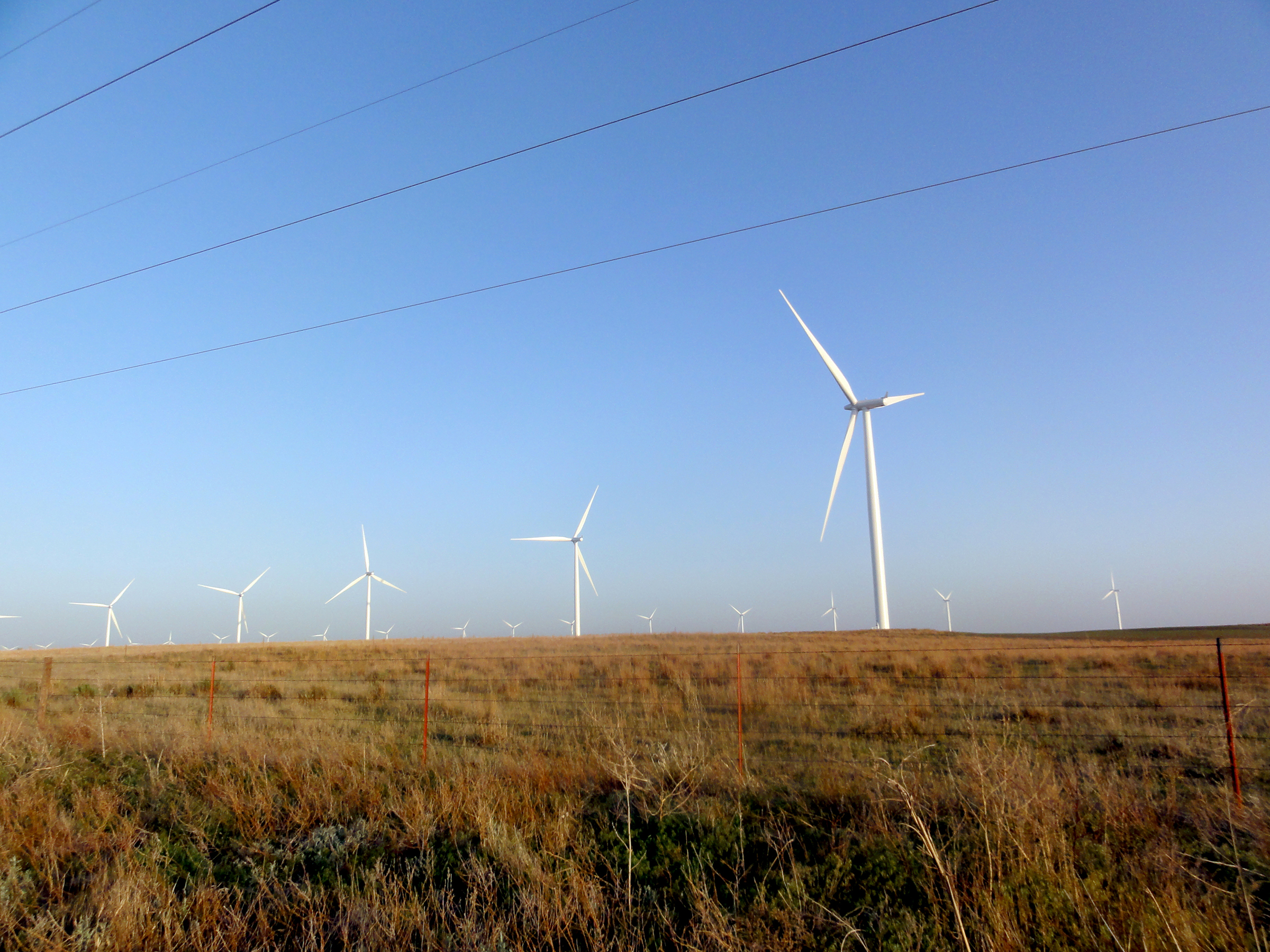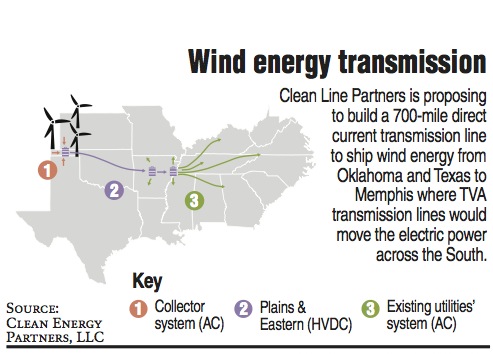TVA could tap into the abundant wind energy of the Great Plains to help power the Tennessee Valley with carbon-free electricity if the federal utility agrees to support one of America's biggest direct-current transmission lines.
But two Tennessee Republicans in Congress are urging TVA not to get blown away too quickly by the claims offered by those backing the wind energy proposal.
U.S. Sen. Lamar Alexander, R-Tenn., and U.S. Rep. Stephen Fincher, R-Tenn., asked TVA Wednesday to carefully evaluate the reliability and security of importing wind energy over a 700-mile transmission line proposed to be built from Oklahoma to Tennessee. The lawmakers said they are wary about the developer of the proposed transmission line, Clean Line Energy Partners LLC, being granted utility status to allow the company to force landowners to sell their property even if the land owners don't want to sell.
"It's up to the TVA board to decide what kinds of electricity to generate and purchase," said Alexander, a member of the Senate Environment and Public Works Committee and a frequent critic of wind turbines and their federal tax credits. "But it is the responsibility of members of Congress to provide oversight to TVA policies, and these questions are part of that oversight."
Rep. Finch said he is "particularly concerned about any possible use of eminent domain" that would force property owners to sell land if they don't want to sell along the proposed transmission line route through Oklahoma, Arkansas and West Tennessee.
Clean Line Energy has signed a memorandum of understanding with TVA to study the possibility of wheeling 3,500 megawatts of wind power from Oklahoma and Texas to a TVA substation in Memphis.
TVA could use the wind power, which is considered a renewable energy source, to help replace many of the aging coal-fired units the utility is shutting down to meet stricter air quality standards. TVA also could transmit the wind-generated electricity along its own transmission lines for use by other Southern utilities looking to boost their share of renewable energy.
"TVA should and will make a decision that is in its best interests, but we believe our project would provide a clean, reliable and cost-competitive source of power that would not increase in price over the next 25 to 30 years," said Mike Skelly, founder and president of Clean Line Energy.
Clean Line Energy has been working on the proposed direct-current transmission line for the past five years and hopes to have the new service in place by late 2018, pending regulatory approval and contracts with both wind generators and utility buyers. Skelly said his company has talked with five to 10 utilities in the South which have an interest in renewable energy. Some companies such as Google and Wal-Mart are interested in buying renewable energy to help meet their corporate environmental goals.
Skelly estimates Clean Line project would spur the building of more than $6 billion of wind turbines in Oklahoma and Texas and should deliver electricity to TVA in the range of 4 to 6 cents per kilowatthour.
He likened the building of the proposed wind network to the start of TVA when the federal utility was created in 1933 to harness the power of another natural resource, the Tennessee River.
"Those network of hydro dams were expensive to initially build but they have paid off well for the Tennessee Valley in the decades since they were built," Skelly said
The proposed "Plains and Eastern" transmission line is one of four such long-distance transmission lines being developed by the Houston-based Clean Line Energy to move wind-generated power from where the winds blow the most in Oklahoma and the panhandle of Texas. Wind turbines in Oklahoma are more than twice as efficient as similar turbines located most anywhere in the Tennessee Valley.
The new transmission lines would be among the biggest DC lines built in America and are projected to take about two and a half years to build. The TVA connection in Memphis would come along a corridor through Oklahoma, which approved Clean Energy as a utility, and Arkansas, which ruled it had no such authority for an interstate transmission company like Clean Energy.
Clean Energy is working through the federal transmission utility, the Southwest Power Association, to approve the proposed transmission route through Arkansas.
Last month, Clean Energy also filed an application with the Tennessee Regulatory Authority for a certificate to become a transmission utility in Tennessee in order to connect its proposed line with a TVA substation in Memphis. Skelly said the company already has agreements with two thirds of the property owners for the easements it would need in West Tennessee.
"Like any utility, we want to work with local land owners to reach an acceptable agreement for these easements," he said. "Memphis is known as North America's distribution center and Shelby County is the ideal place to locate our converter station, connect to the Tennessee Valley Authority transmission system, and deliver enough clean energy for over 1 million homes per year."
Such easements are similar to what TVA has for is transmission lines and what pipelines obtain for their underground pipes, including for projects like the Keystone pipeline through Nebraska that Alexander and Finch have both voiced support for building.
Chattanooga environmental consultant Sandy Kurtz, a proponent of wind power, said TVA should address the questions about cost, reliability and security of the proposed wind project.
"I think TVA will find that wind is one of the best sources of energy," she said. "Sen. lexander has always been reticent about wind energy and this (letter) seems to fall in line with his negative views about wind."
TVA currently contracts for more than 1,500 megawatts of wind-generated power from nine contractors from the Midwest. The only wind generation from within the Valley is the 27-megawatt wind farm atop Buffalo Mountain in Oak Ridge, which is operated for TVA by Invenergy.
Contact Dave Flessner at dflessner@timesfreepress.com or at 757-6340.


